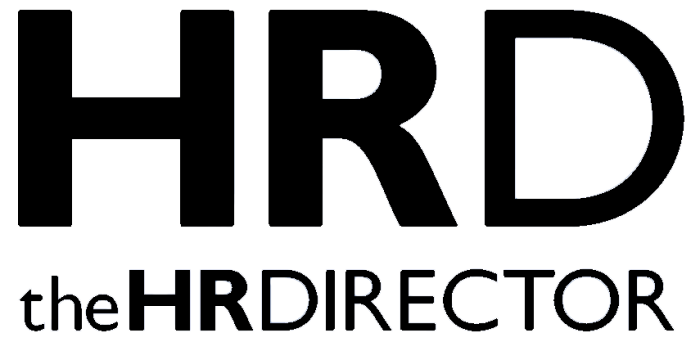This article explores how the ‘Team of Teams’ model, featuring decentralised decision-making, shared consciousness and empowered execution, enables HR leaders to build organisations that thrive amid rapid change.
By shifting away from traditional hierarchies, HR leaders can foster agility and innovation, positioning their organisations to thrive in an AI-driven world. The framework outlines practical strategies for implementing this model, overcoming resistance and measuring success.
The need for a new organisational model
Traditional organisational structures, designed for stability and predictability, often result in slow decision making, siloed teams and limited responsiveness to change.
As businesses face rapid technological advancements and evolving workforce expectations, rigid hierarchies are increasingly becoming liabilities.
Key research highlights include:
- Organisations adopting team-based structures report up to 30% efficiency gains (McKinsey, 2024).
- 42% of HR leaders say outdated job structures hinder agility (Gloat).
The ‘Team of Teams’ model addresses these challenges by creating a networked organisation where teams operate independently but remain aligned through shared goals and transparency.
The ‘Team of Teams’ model, popularised by General Stanley McChrystal in Team of Teams: New Rules of Engagement for a Complex World, emerged from the military’s need for agility in complex environments. It shifts organisations from rigid hierarchies to adaptable, networked teams that operate with shared consciousness and decentralised decision making. Principles which are now essential in business.
Key principles and how to apply the ‘Team of Teams’ model
- Shared consciousness
For an organisation to function as a cohesive network, teams must share an understanding of goals, priorities and challenges. Transparency and open communication are crucial for alignment.
How: Implement regular cross-functional meetings and communication tools like shared project dashboards or platforms (e.g., Slack, Microsoft Teams) to keep teams informed and aligned in real time. These practices foster transparency and a shared understanding.
- Decentralised decision making
Empowering frontline teams to make decisions reduces delays and enables faster responses to change. However, this autonomy should be guided by clear strategic guardrails.
How: Establish decision-making frameworks that clarify decision rights and enable leaders to delegate with confidence. Leadership development programs can focus on delegation and decision making to build the trust and autonomy needed for effective team ownership.
- Empowered execution
Rather than dictating solutions, leadership should present problems for teams to solve. This encourages creativity, adaptability, and ownership.
How: Encourage leaders to empower teams to take initiative. Provide tools and training to help leaders support team driven problem solving, transitioning from a directive to a coaching approach.
- Trust as a Foundation
Decentralisation only works if teams trust one another and share information openly. Without trust, silos persist, collaboration weakens and decision making slows down.
How: Build trust through initiatives such as team building activities, open feedback channels and leadership transparency practices. These efforts create a psychologically safe environment where teams can collaborate effectively.
- Continuous learning and adaptation
Agile organisations thrive on constant reflection and iteration. Teams should assess outcomes regularly and adjust strategies based on learnings.
How: Conduct regular retrospective sessions after key projects or decisions to evaluate what worked and what did not. Pair these with resilience training to help employees adapt to change and cultivate a culture of continuous improvement.
Spotify’s squad model
Spotify’s ‘Squad Model’ demonstrates decentralised teamwork in action. Squads are small, autonomous teams responsible for specific elements of product development. These squads operate like mini-startups, making independent decisions while staying aligned through Tribes (groups of squads) and Guilds (cross-functional knowledge-sharing communities).
Organisations can emulate this model by creating decentralised teams, ensuring alignment through shared goals and providing mechanisms for knowledge-sharing across teams.
Measuring impact
To measure the success of the ‘Team of Teams’ model, it’s essential to track specific metrics that demonstrate effectiveness:
- Decision velocity: Measure the time from problem identification to action. Successful transformations typically show a 40-60% improvement in decision speed.
- Collaboration index: Track participation in cross functional projects and the sharing of information across teams to identify silos
- Leadership effectiveness: Use 360° feedback to assess leaders’ shift from command-control to coaching behaviours
- Organisational adaptability: Measure how quickly teams can pivot projects or reallocate resources in response to new priorities
Regular pulse surveys can complement these metrics, providing qualitative insights that help gauge employee perceptions of the changes. These quantitative and qualitative insights demonstrate the ROI of organisational redesign to executives.
Overcoming challenges
While the ‘Team of Teams’ model offers significant benefits, it also presents challenges:
- Cultural resistance: Employees accustomed to traditional structures may resist increased autonomy or transparency.
- Coordination complexity: Balancing autonomy with alignment requires robust communication frameworks.
- Leadership shifts: Leaders may struggle with relinquishing control and adopting a coaching approach
To address these challenges:
- Pilot Initiatives: Start small by launching pilot initiatives with high impact teams to showcase early wins, like faster decision-making or improved collaboration.
- Storytelling: Share success metrics and stories across the organisation to build momentum and demonstrate the benefits of the model.
- Leadership Coaching: Provide leadership coaching focused on empowering teams while maintaining alignment with organisational goals.
When employees experience tangible benefits such as greater autonomy or faster responses, adoption will spread more quickly throughout the organisation.
Future ready organisations
The ‘Team of Teams’ model is not just an operational shift. It’s a mindset change that redefines leadership, collaboration and innovation in an increasingly complex world.
By embracing principles like shared consciousness, decentralized decision-making, empowered execution, trust-building, and continuous learning, organisations can build agile networks capable of thriving in uncertainty.
HR leaders must decide: stick with traditional approaches or boldly lead the transformation toward a more agile future. The question is no longer if change is necessary, but how boldly you are willing to lead it.









